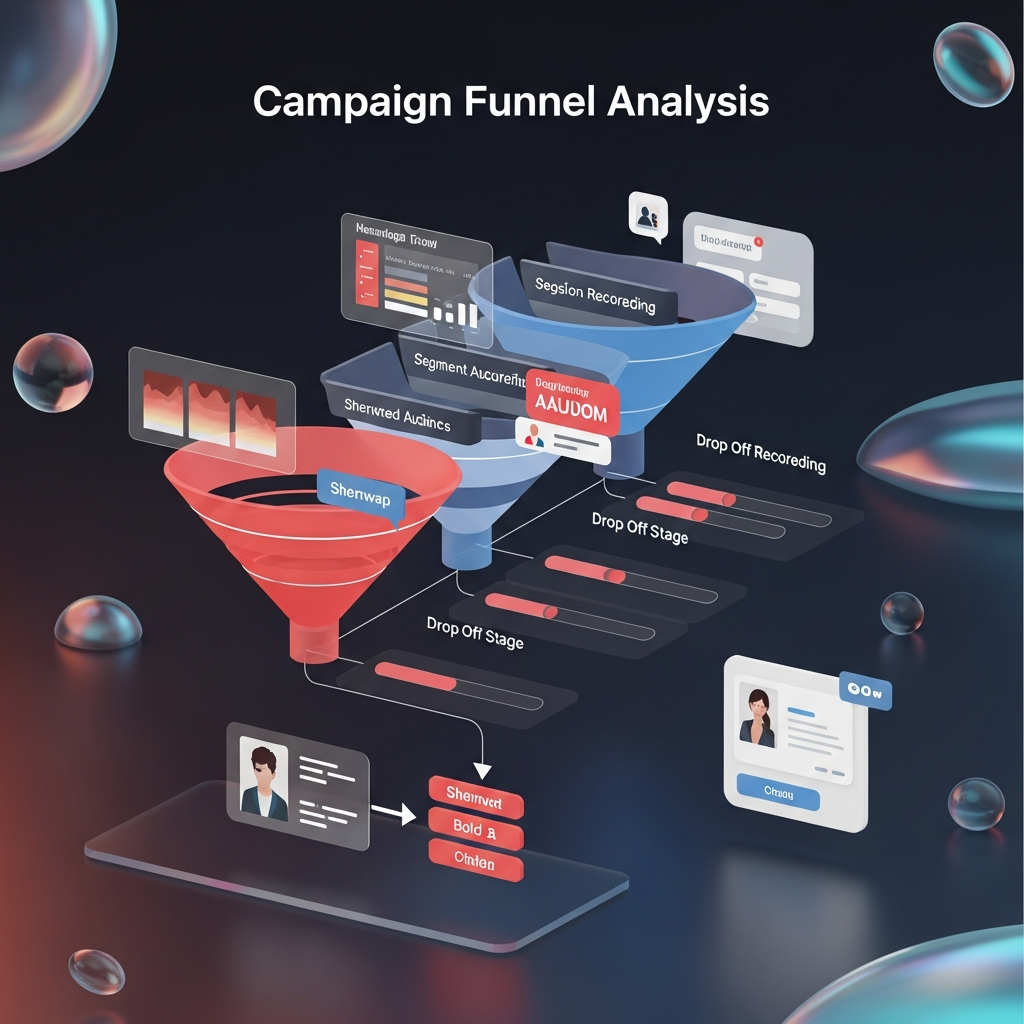Advanced CPA Marketing Networks Strategies for Maximum ROI
Cost-per-action (CPA) marketing continues to evolve at a breakneck pace, driven by new tracking technologies, heightened privacy regulations, and increasingly sophisticated fraud tactics. In this comprehensive guide, we’ll walk through the advanced architectural considerations, funnel analysis methodologies, and optimization strategies you need to extract the maximum ROI from your CPA campaigns. Whether you’re scaling a global enterprise or fine-tuning a boutique affiliate program, these best practices will help you stay ahead of the curve.
CPA Marketing Network Architecture

To build a robust CPA marketing infrastructure that can scale with your campaigns, it’s essential to understand the four core components that drive performance, reliability, and transparency. Whether you’re an advertiser setting ambitious revenue goals or a publisher hunting for high-converting offers, a clear architecture map ensures every stakeholder has a definitive view on data flow, attribution, and payouts.
1. Advertiser Dashboard
The Advertiser Dashboard serves as the nerve center for campaign creation and management. Intuitive budget sliders let you allocate spend across geographies, channels, and creatives with a single swipe, while a drag-and-drop asset uploader ensures that tracking pixels, images, and video creatives are deployed instantly. Real-time analytics panels display click-through rates, conversion events, and cost-per-acquisition metrics side by side, enabling you to pivot budgets without losing momentum.
2. Publisher Portal
On the flip side, the Publisher Portal is designed to facilitate seamless offer discovery and streamlined link generation. A searchable offer catalog allows affiliates to filter by vertical, payout range, traffic source restrictions, and device types. Once an affiliate selects an offer, an embedded tracking link generator issues a unique parameterized URL. Advanced users can layer on SubID tokens and geo-redirect rules directly within the portal, minimizing the need for third-party link cloakers.
3. Tracking & Validation Engine
At the heart of any high-performing network lies a sophisticated Tracking & Validation Engine. This module handles both client-side pixel fires and server-to-server postback integrations, ensuring that every impression, click, and conversion is logged accurately. Fraud prevention overlays include real-time device fingerprinting, IP address shields, and anomaly detection filters that block suspicious patterns such as rapid-fire conversions or mismatched user-agent data. By validating events against a multi-tiered rule set, you safeguard your budget from nefarious traffic sources.
4. Payment System
Finally, the Payment System manages the critical flow of funds between advertisers and publishers. Automated payout pipelines trigger weekly, biweekly, or monthly disbursements based on preconfigured thresholds. Integration with global payment rails—such as ACH, wire transfers, and digital wallets—ensures that affiliates receive funds in their preferred currency. Customizable reserve settings and hold periods protect advertisers against chargebacks and allow time for postback reconciliation.
API Integrations & Webhooks
Modern CPA networks provide RESTful APIs that allow you to automate campaign creation, publisher onboarding, and reporting. Webhooks deliver real-time event notifications—clicks, conversions, chargebacks—directly to your backend. By integrating these data feeds into your internal BI systems or CRM, you can trigger automated budget adjustments, deploy creative updates, and send customized alerts when performance thresholds are met.
Fraud Scoring with Machine Learning
Traditional blacklist approaches are no longer sufficient in an environment where bots adapt rapidly. Leading networks employ machine learning models to assign fraud scores to each click and conversion. These models analyze hundreds of variables—such as IP velocity, browser fingerprint anomalies, traffic source reputation, and historical conversion quality—to calculate a risk index. Conversions falling below an acceptable fraud score can be quarantined or automatically blocked.
User Roles, Permissions & White-Label Capabilities
Enterprises and agencies often require role-based access controls to manage large teams. CPA platforms support granular permission settings—granting marketing managers the ability to view reports, enabling campaign operators to manage budgets, and restricting publishers to offer listings. White-label functionality lets agencies rebrand the network portal, providing a seamless experience for end clients under their corporate identity.
Compliance & Data Privacy
Data privacy regulations such as GDPR, CCPA, and local data residency mandates impact how you collect, store, and process user information. Top-tier networks enforce consent management frameworks, purge data upon request, and provide audit logs for all user interactions. Multi-region data centers ensure compliance with local laws, while encryption at rest and in transit safeguards sensitive PII and transactional records.
Custom Reporting & Real-Time Dashboards
Off-the-shelf reporting is no longer enough. Advanced networks offer drag-and-drop report builders that combine metrics across dimensions—time, geography, device, publisher, creative. Real-time dashboards display live traffic streams alongside performance alerts, enabling you to detect anomalies and optimize campaigns on the fly. Report scheduling and white-label PDF exports streamline stakeholder communications.
Campaign Funnel Analysis

After establishing a rock-solid architecture, the next step is optimizing the conversion pathway. A well-structured funnel analysis pinpoints friction points, highlights drop-off stages, and illuminates underperforming segments. The campaign funnel is not merely a series of pages—it’s a dynamic, data-driven ecosystem where every user interaction can be measured, tested, and improved.
Segmented Audience Tiers
Segmentation is your secret weapon. By breaking your traffic into tiers—such as cold traffic, remarketing audiences, and high-intent lookalikes—you can tailor each stage of the funnel. Cold traffic might see broad educational content, while remarketing audiences receive targeted offers or discount codes. High-intent segments could be funneled directly to a streamlined landing page with minimal form fields. Tagging these cohorts within your analytics platform allows you to track progression rates, average order values, and lifetime value per segment.
Heatmap Overlays & Session Recordings
Visual analytics tools—like heatmaps and session recorders—reveal how users interact with your pages in granular detail. Heatmaps show click concentration, scroll depth, and hover intensity, letting you rearrange critical elements (CTA buttons, form fields, or trust badges) into high-attention zones. Session recordings capture real user sessions so you can observe hesitation points, unresponsive elements, and navigation loops. These insights inform UX tweaks, enabling micro-optimizations that compound into significant uplifts in conversion rates.
Drop-off Bars & Micro-Conversion Tracking
Standard funnel charts show where users abandon the process at each stage. By combining drop-off bars with micro-conversion events—such as email signups, video plays, or chat widget opens—you gain a holistic view of user intent. A low drop-off rate but stagnant micro-conversion score indicates that the initial barrier is too high, whereas a high drop-off but strong engagement might suggest pricing or offer misalignment. Tracking both macro and micro conversions empowers you to run targeted tests that address the right pain points.
Optimization Callouts & A/B Testing
Once you’ve identified friction zones, deploy A/B tests to validate hypotheses. Some of the most impactful experiments include:
- Shortening forms: Remove non-essential fields, implement auto-fill features, and break complex forms into multi-step progress journeys.
- Emphasizing CTA buttons: Test contrasting colors, alternative copy, and multiple button placements (above the fold, mid-scroll, and at the end of content).
- Introducing chatbots: Real-time chat widgets can qualify leads, answer FAQs, and guide prospects through the funnel—reducing drop-off in mid-conversion stages.
Cross-Channel Attribution
In multi-touch environments, standard last-click models undervalue upper funnel touchpoints. Implement multi-channel attribution models—such as linear or time-decay—to credit each interaction. This approach ensures that brand awareness campaigns, content marketing efforts, and retargeting ads all receive attribution credit. The result is smarter budget allocation and more accurate ROI calculations.
Dynamic Offer Optimization
Top networks provide the ability to rotate offers dynamically based on performance thresholds. Instead of a static single offer, set rules that auto-switch to the next best-performing creative or vertical when your primary CPA target is met. By leveraging machine learning algorithms, you can forecast conversion velocity and prime the system to introduce fresh creatives before performance plateaus, keeping ROI at peak levels.
Continuous Data-Driven Iteration
CPA marketing is a marathon, not a sprint. Establish a continuous review cadence—weekly for operational metrics, monthly for strategic assessments, and quarterly for architecture audits. Monitor key performance indicators, including:
- Cost per Acquisition (CPA) trends by traffic source and geo
- Conversion rate fluctuations across device types
- Publisher performance scorecards with fraud rates factored in
- Revenue per click (RPC) segmented by creative variations
Use these insights to refine bidding strategies, purify traffic pools, and update fraud filters. A data-driven culture leads to compounding gains that outpace static campaign setups.
Multi-Variate vs A/B Testing
While A/B tests compare two variants, multi-variate (MVT) experiments evaluate multiple elements simultaneously—headlines, images, form layouts, and CTAs. MVT helps you understand interaction effects between page components, leading to compounding uplift. However, MVT demands higher traffic volume to reach statistical significance, so consider a two-stage approach: run A/B tests on high-impact elements first, then an MVT on top performers.
Re-Engagement & Retargeting Strategies
Not every visitor converts on the first touch. Implement retargeting sequences across display, social, and native channels to re-ignite interest. Use sequential message testing to determine the optimal cadence and creative progression—educational content first, followed by case studies, and finally direct offer pushes. For email retargeting, tailor subject lines and preview text to the user’s last action, increasing open rates and recall.
Geo & Device Split Testing
Geolocation plays a pivotal role in conversion performance. Split your campaigns by region to test localized creatives, pricing structures, and offer variants. Likewise, differentiate between desktop, mobile web, and in-app traffic—each requires unique user experiences. Mobile users often respond better to simplified forms and native app deep links, whereas desktop prospects might tolerate richer content and longer copy.
Frequency Capping & Offer Clustering
Overexposure to the same offer can lead to banner blindness and ad fatigue. Implement frequency caps at both the ad and funnel levels to limit impressions per user. Offer clustering—grouping similar but distinct offers—prevents fatigue by rotating new options within the same vertical. This approach maintains novelty while preserving contextual relevance.
Affiliate Incentives & Loyalty Mechanics
Motivating top publishers requires more than standard CPA payouts. Tiered bonus programs, revenue share pools, and early payment incentives can boost loyalty and attract premium traffic sources. Time-limited contests or leaderboards foster healthy competition, driving affiliates to optimize their campaigns and share best practices within your network community.
Case Study: Financial Lead Generation
A mid-sized lender partnered with a top CPA network to generate pre-qualified loan applications. By integrating server-to-server postbacks and instituting a fraud scoring threshold of 80/100, they eliminated 15% of fraudulent leads. Heatmap analysis led to a 30% reduction in input fields on the application form, boosting completion rates by 22%. A multi-touch attribution model revealed that a YouTube awareness campaign contributed to 18% of conversions previously uncredited, prompting a budget reallocation that increased ROI by 12% within two quarters.
Conclusion
Mastering CPA marketing networks is as much about people and processes as it is about technology. By architecting a platform that balances flexibility, security, and scalability, and by dissecting every stage of the user funnel for insights, you’ll be equipped to make data-driven decisions that compound over time. Whether you’re an advertiser seeking lower CPAs or a publisher aiming for higher payouts, these advanced strategies will sharpen your competitive edge and maximize your ROI. Start by auditing your current setup, identify your biggest bottlenecks, and deploy one high-impact test this week. The difference between good and great is in the details—and the details make all the difference.
Key Takeaways
- Build a modular network architecture with APIs, fraud scoring, and customizable reporting.
- Leverage heatmaps, session recordings, and drop-off analysis to optimize your funnel.
- Employ split testing, retargeting sequences, and multi-touch attribution for precision.
- Incentivize affiliates with tiered bonuses, contests, and reliable payout schedules.
- Commit to continuous iteration through real-time dashboards and data governance.









